29 Interesting Facts About Burmese Pythons (With Pictures)
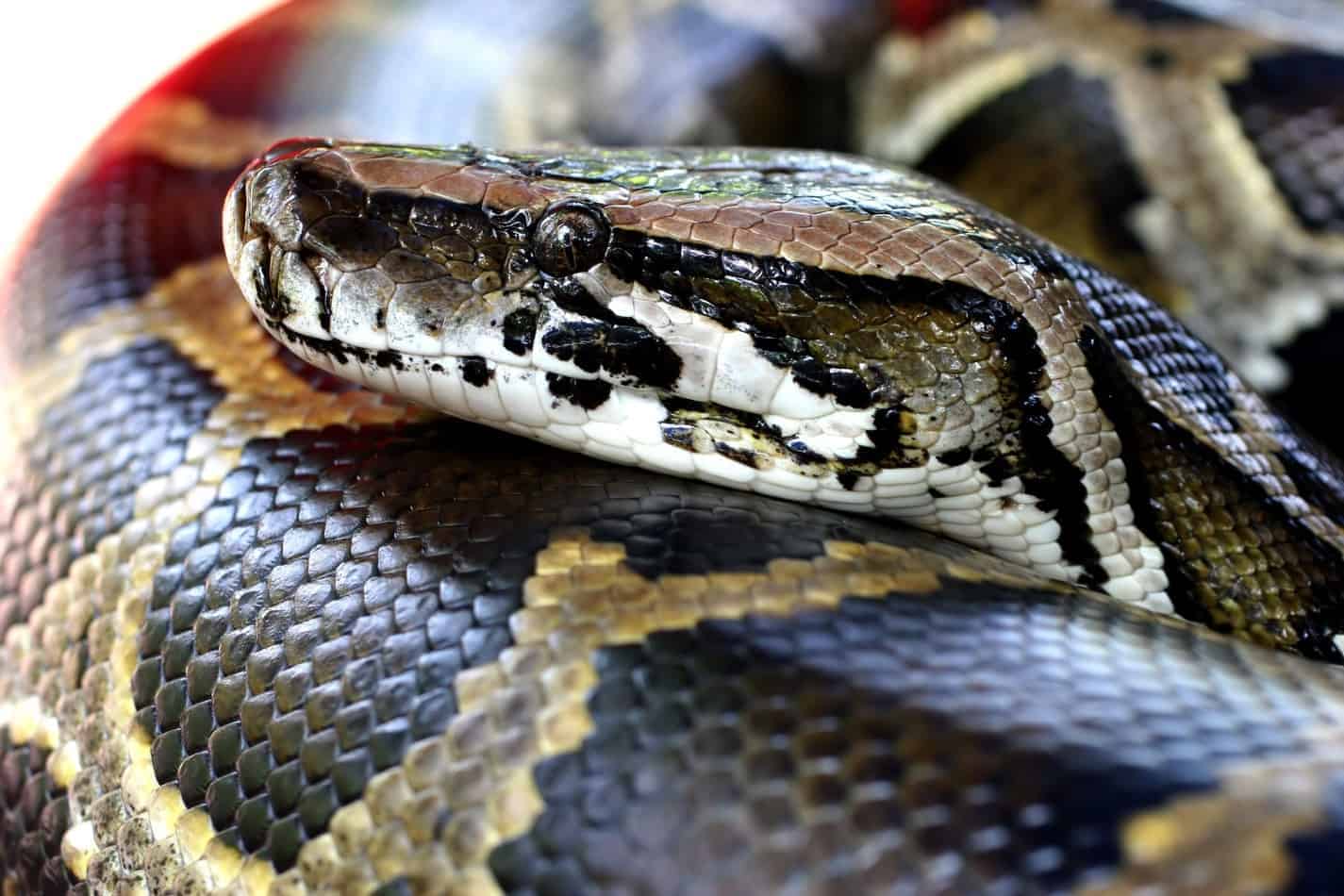
Burmese Pythons, like most snakes, are the picture of awesomeness. If you’re wondering about these big bad boys, you’re not the only one. I decided to do some research on Burmese pythons and compiled these 29 facts that are pretty epic (in my humble opinion).
#1: They’re from Asia
Southeast Asia, to be more specific. Think China, India, Vietnam, Indonesia, Nepal, Sri Lanka, so on and so forth. These areas are a nice mix of grasslands and jungles. They make a lovely home for these splotchy, earth-toned snakes.
#2: They Have Many Names
We might coin them Burmese pythons, but their actual name (according to science and all that technical stuff) is python bivittatus. They’re also called Asiatic rock pythons and tiger pythons (not to be confused with the venomous tiger snake). However, if you’re one of the lucky few who still owns this species of snake, feel free to name her Nagini or Fluffikins.
#3: Second Biggest Snakes
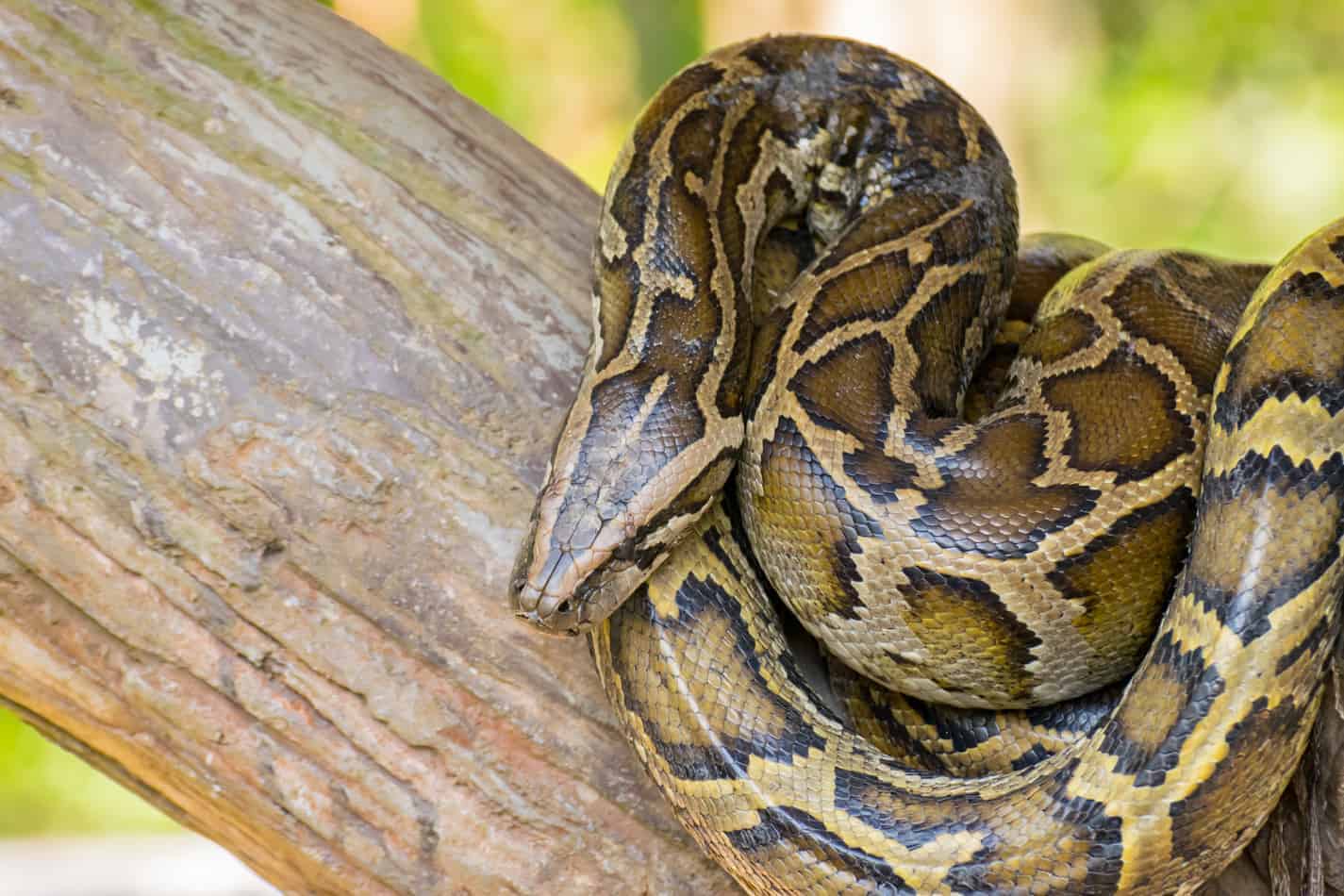
As quite likely the second largest snake in the world, the females of this species are right up there with green anacondas and reticulated pythons. They’re not the kind of snake you see snake handlers just picking up to show off to your kindergartener’s class at the zoo field trip unless that guy has some serious arm strength. Seriously. They’re massive.
#4: Burmese Pythons are Big Boys
The males of this species grow anywhere from 8-17 feet long and are as thick around as a street lamp pole. They’re usually around two hundred pounds of muscle and pure awesomeness.
#5: They’re Bigger Girls
As with many snakes, the females have the lead as far as size goes. Lady Burmese pythons can grow up to 23 feet long, or even longer. They also weigh up to 200 lbs, with a healthy diet. The bigger these snakes are, the more eggs they can lay after being bred.
#6: Florida Fans
Don’t worry, I’m not talking sports here (I’m pretty sure Florida Gators and Burmese pythons should be separated topics, for safety purposes). Sometime in the 80’s, someone lost their dear pet Nagini in southern Florida, around the Everglades National Park. They could have set him or her free on purpose, actually. The jury is still out on this one. Bottom line: they’re still there, and they keep breeding.
#7: They’re an Invasive Species
As evidenced by the Floridan issue with these big snakes breeding and slithering all over Everglades National Park, they apparently have no issue living and flourishing in a completely foreign country than their original ones and have been clearly labeled as an invasive species.
#8: Pro Swimmers
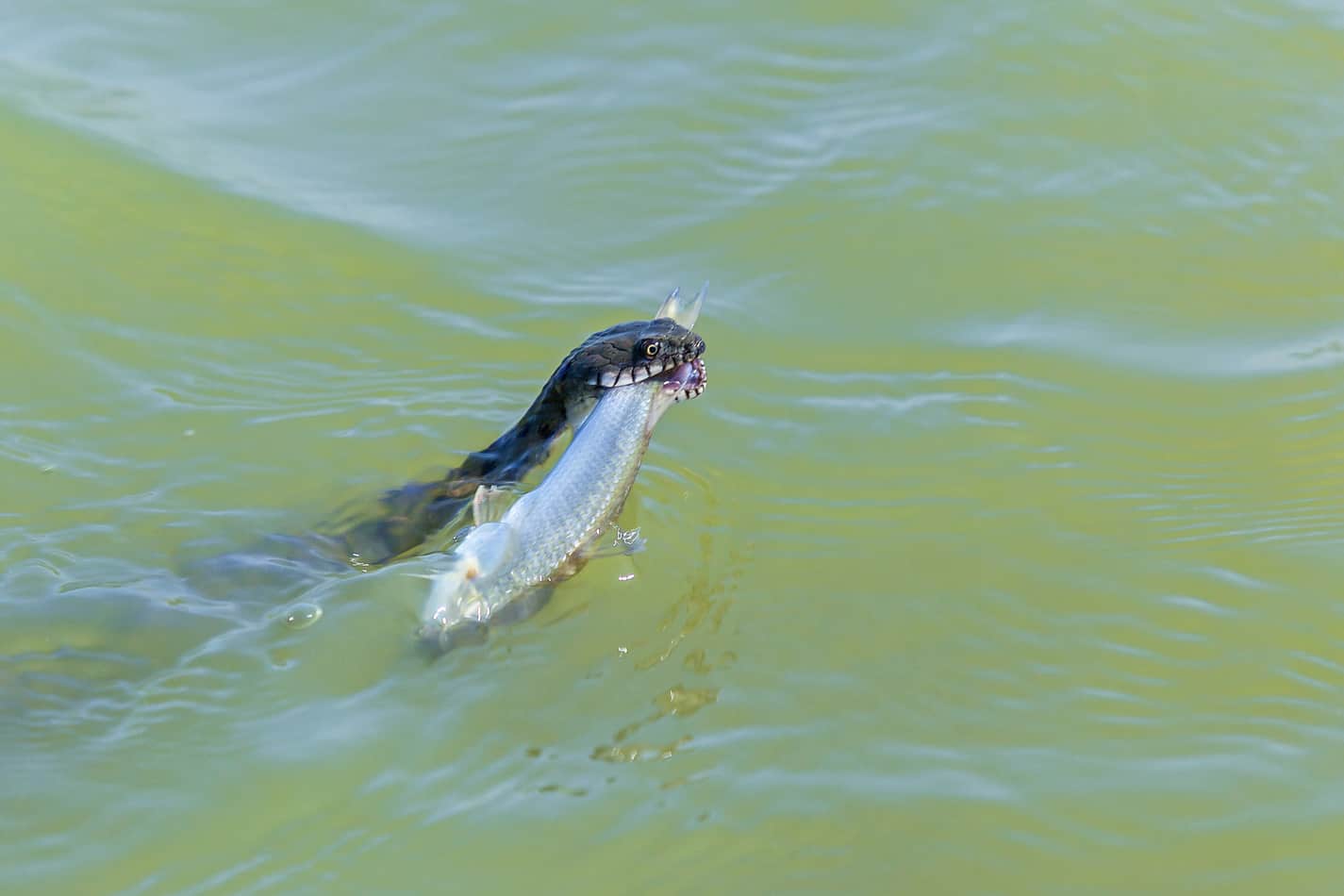
These guys are semi-aquatic, which means you find them a lot around water and you shouldn’t be surprised if you see videos of these guys swimming around like happy little tadpoles on growth steroids. They can actually hold their breath underwater for up to 30 minutes and like being submerged for around that long. Do you have a bucket list item of swimming with dolphins? You could switch that to pythons if you want.
#9: They Give Great Hugs
Sometimes you just need a hug to feel better. However, you might not want to ask for one from these huge reptiles. Burmese pythons are constrictors, and their tight, squeezing coils are what they use to hunt and essentially strangle their prey. Feel free to ask your pet cat for a hug instead.
#10: These Guys Can Eat Alligators
And they have. In the event of a grown Burmese python and a smaller-sized alligator going toe-to-toe, odds are in the favor of the python getting a meal. Snakes don’t have jaws like you and me, so instead of “unhinging” their mouths to swallow massive animals whole, it’s more like stretching a very elastic ligament-like face shape.
#11: They, Too, Like Deer Jerky
Besides large mice, rabbits, and the occasional gators, these massive reptiles have been recorded constricting and eating entire deer. So they might like their jerky fresher, but… you get the idea. They also eat large birds, if they can catch them. Basically, anything your average carnivore would enjoy.
#12: They’re Not Unlike Chickens
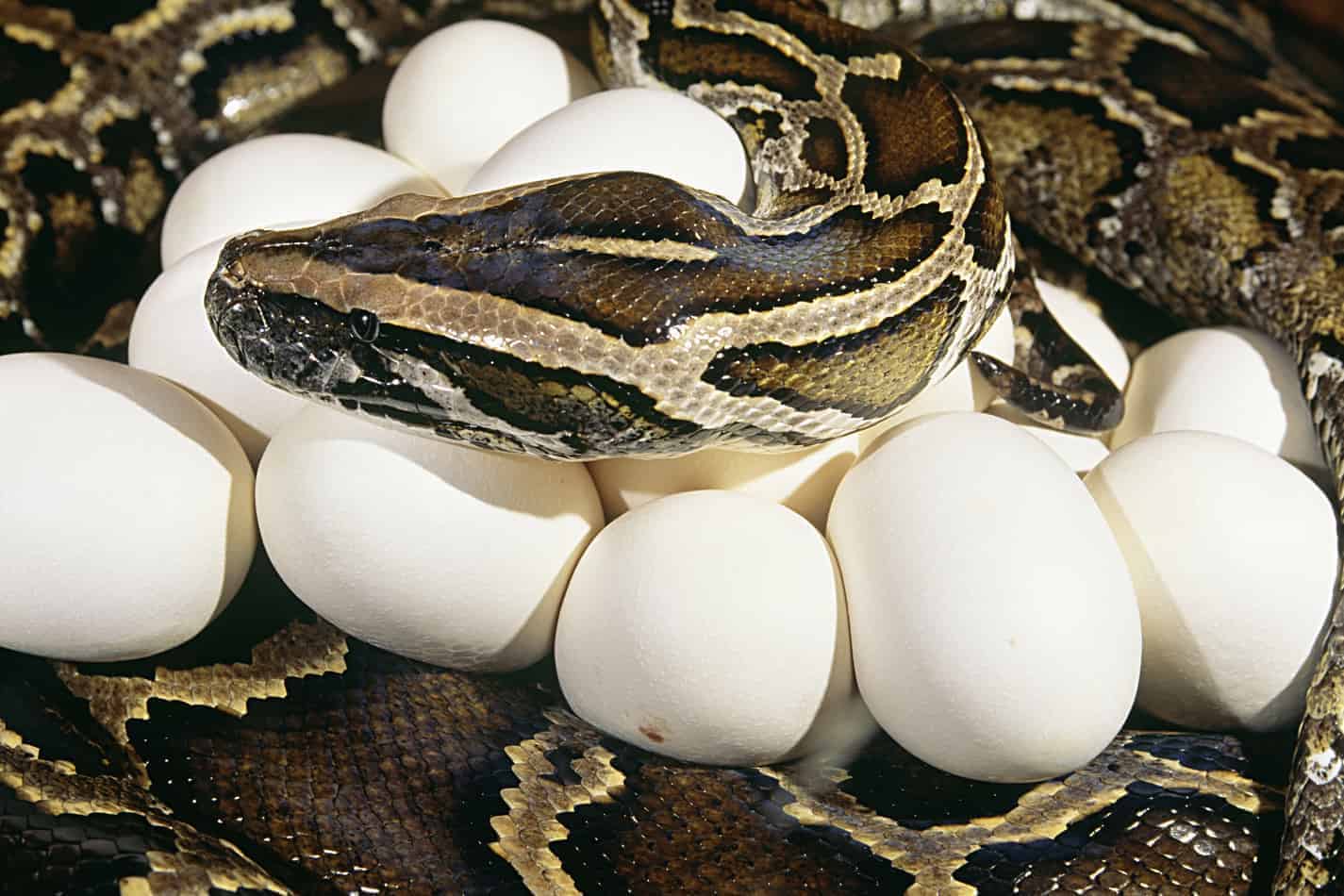
Some snakes give live birth to their young, and some lay eggs. These guys are of the latter sort and can lay 35-100 eggs per clutch, making them capable of laying more eggs at a time than most other snake species. Something else they share with chickens? I’ve been told snake tastes the same. (But let’s be real, what meat doesn’t?)
#13: Tree-huggers
While they like grass, water, and Floridian national parks, they also like to climb. As younger snakes, they tend to be in trees more than on the ground. I assume that as they get bigger, they realize that most trees can’t support their 200-pound frames, and that’s why they’re sighted more on solid grounds as adults.
#14: There’s Conflict on Tameness
According to some snake-lovers, these guys make great pets when they’re treated right, and are docile and make amazing pets. Most others point out that a significant amount of injuries and/or deaths to snake handlers are from these snakes, as opposed to any of the others…
#15: Venom Isn’t Their Forte
Burmese pythons are non-venomous. Instead of poisoning their prey, they prefer a more “hands-on” method… or more like coils-on, I guess. This is probably a good thing, because as scary as a 23-foot snake might be to you, imagine a 23-foot snake who has glistening fangs dripping with venom. They don’t have poisonous fangs, but that doesn’t mean they can’t bite you.
#16: They *Could* Bite
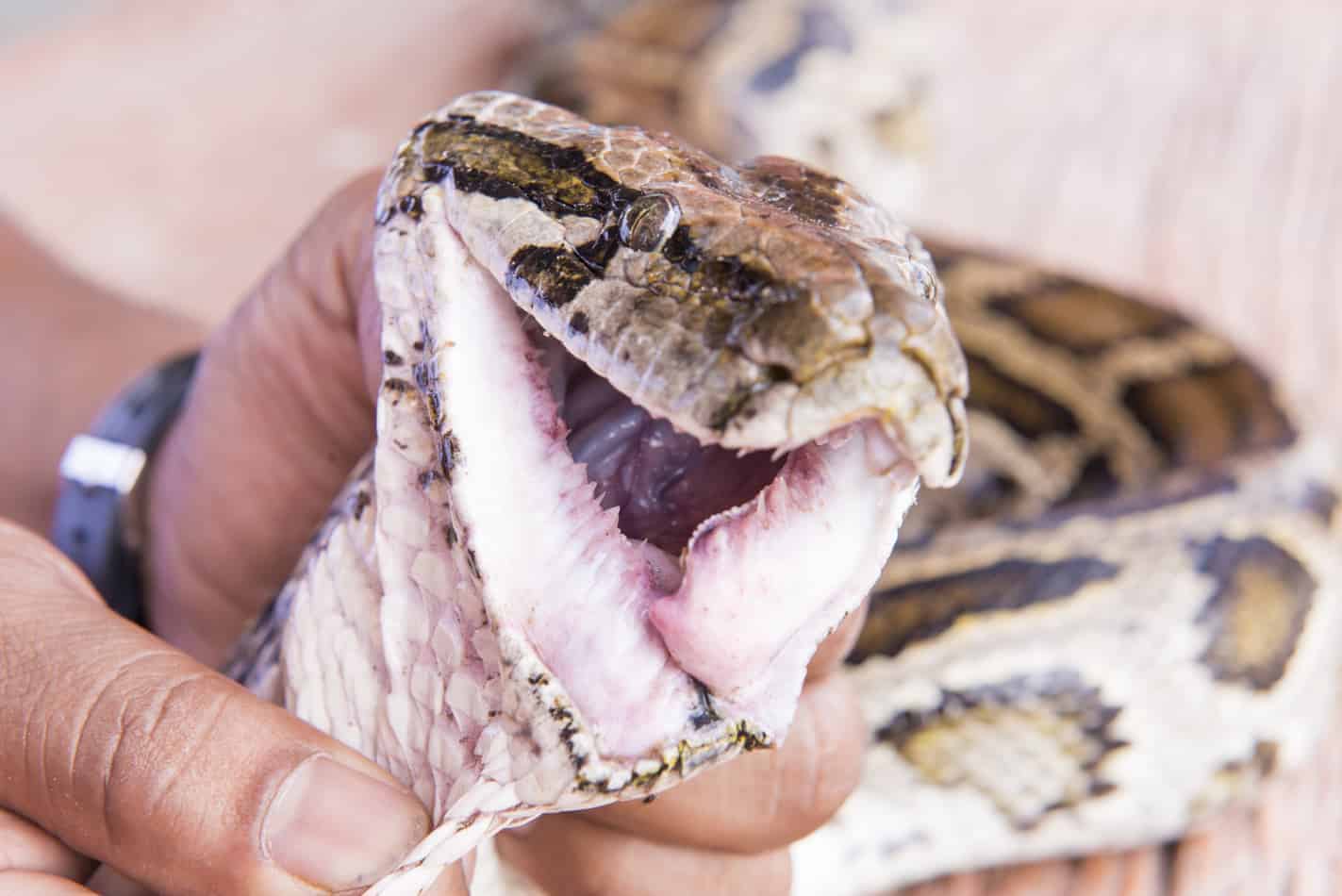
It’s not common. Actually, if you’re really getting on this big, exotic snake’s nerves (and I’m talking really, really provoking them), then it’s more likely that they’ll try to give you one of their famous hugs than try to bite you. If it’s a minor annoyance or an accident at feeding time, they might get that chomper on you.
#17: Their Teeth are Angled
Burmese python teeth sort of look like backward-angles combs, so if you’re one of those few, those lucky few, who get to witness these awesome reptiles and you manage to annoy it enough to bite you (first of all, why would you test this particular snake?), then be ready for several pricking sensations that’ll hurt for a bit and might puncture the skin but shouldn’t be too much of a problem. Pop on a band-aid. Remember, there’s no venom involved. Just little teeth.
#18: The Mamas are Cuddly
I use “cuddle” as a loose term. When eggs are being incubated, mama snakes coil around their little baby eggs and then begin contracting their muscles in a jolty, twitchy sort of rhythm, not unlike shivering. Snakes might be cold-blooded, but the moms have found a way to warm up so they can incubate their babies. That’s probably as close to cuddling as you’ll ever see these snakes get. Cute.
#19: They Live to 20 (ish)
Burmese pythons can live to be around twenty years old. Of course, some might live shorter lives and some live longer, but it all depends on whether they are in the wild or in captivity and what their diet is like. So while it might outlive your pet goldfish, it probably won’t outlive your pet tortoise who’s approaching his seventy-fifth birthday, or even a pet horse.
#20: They are Slow-pokes
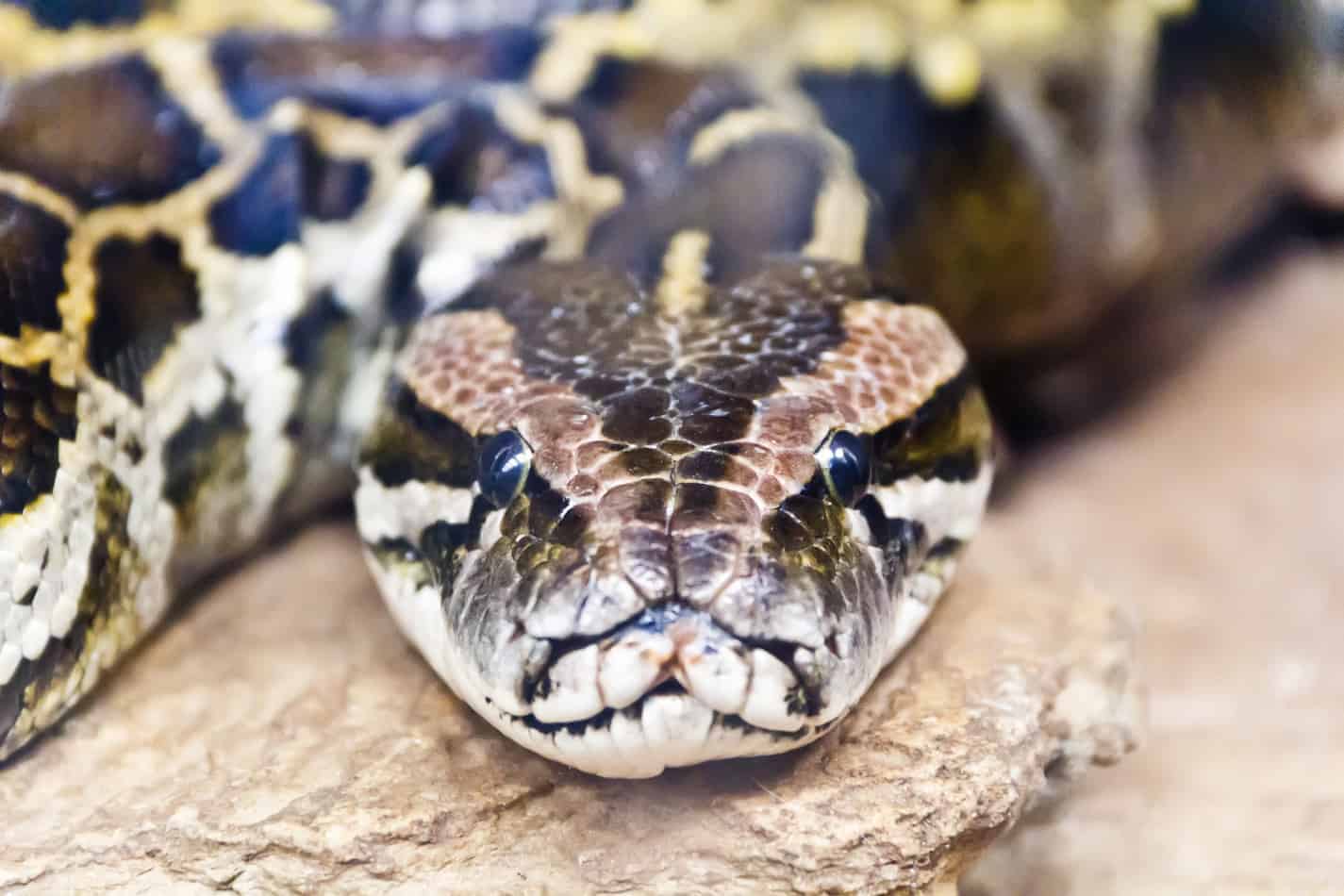
On land, these guys don’t exactly rival a cheetah. Southeast slither at about one mile per hour. After all, it’s probably hard to lug around that much length and volume. Underwater, they move a little bit faster. When they strike before constricting their prey, they can move fast, but otherwise, these lazy snake buddies like to take their sweet time.
#21: They Have Enemies, Too
Their predators include bears, wolves, bobcats, other snakes, and while they’re little hatchlings, even large birds and raccoons are after them. Basically, anything that can stand up to these massive piles of muscular strangling power can count itself as a predator.
#22: They Like Rabbit Soup
When Burmese pythons are pets, which is uncommon in the U.S. now (more on that in a bit), the most common thing to feed them are either very large pre-killed rats or rabbits. If you’re a fan of rabbits and are a little offended that they’re being fed to giant, dangerous snakes, just remember that some people like rabbit soup. Are snakes and humans so different?
#23: They Like Humidity and Heat
You know that moment when you walk outside and it’s like someone punches you in the face with hot air thick with humidity and the smell of swampy goodness? That’s a Burmese python’s favorite feeling. These guys need to be in hot, moist environments to do well. No wonder they’re fans of Florida, come to think of it.
#24 They’re Nocturnal
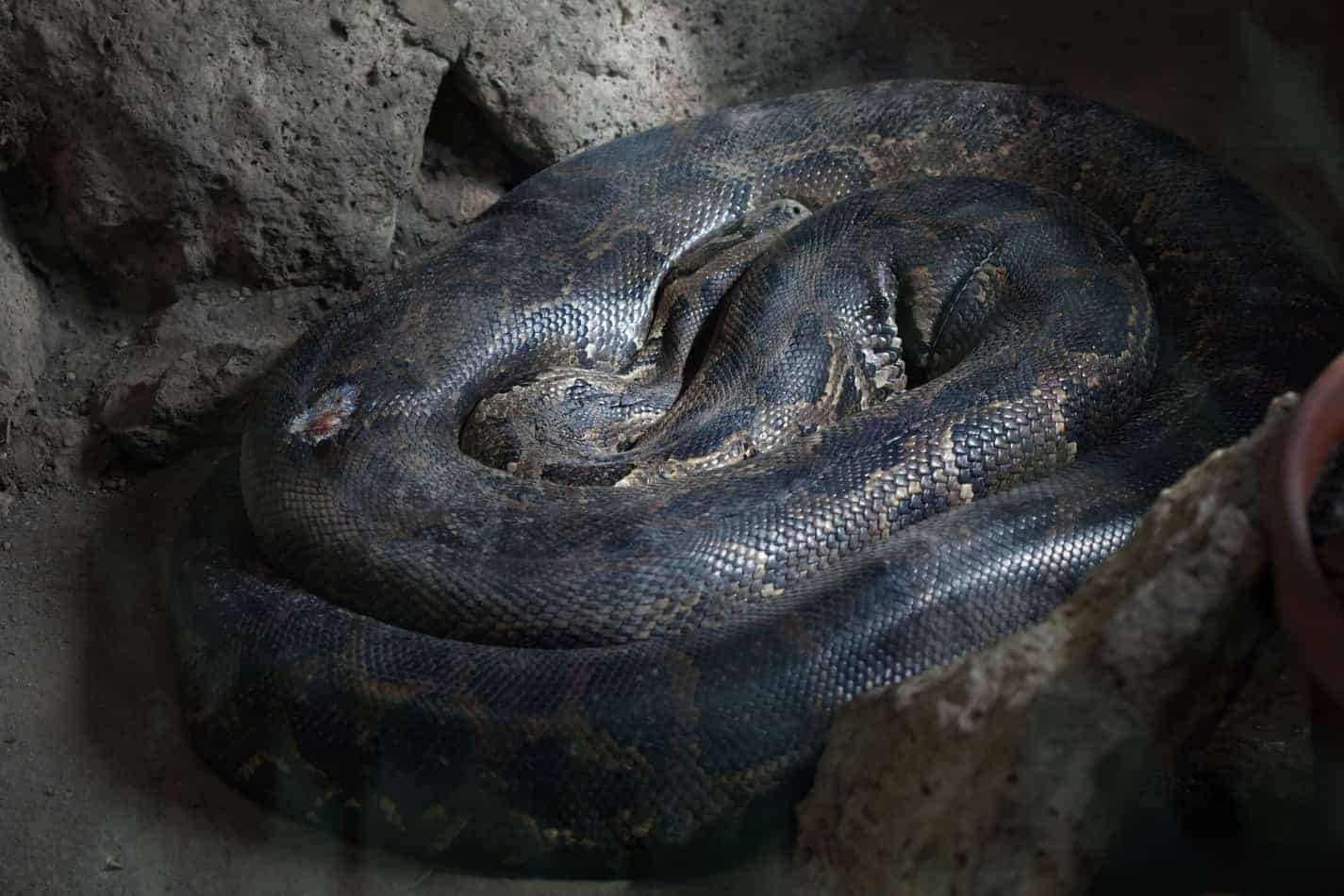
Some snakes are actually very active during the day, and some, like the corn snake, are mostly active at certain times of the day, like dawn and dusk. Some snakes are nocturnal, like the large Burmese python. These snakes do their hunting and slithering about in the wee hours of the night and early morning, which means if you’re anywhere near where these amazing creatures are roaming, like southern Florida or anywhere in eastern Asia, and you’re out late at night in a grassy area, you very well could see one of these giant snakes on the prowl (or is it on the slither?…).
#25: They’re Antisocial
Again, are humans and pythons actually very different? These guys are lonesome creatures and they like it that way. They only really associate with other snakes (or other animals in general, outside of eating them) when it’s mating season. So the next time you curl up on your couch watching Gilmore Girls and eating cold french fries to avoid all human interaction, just remember: Burmese pythons will always understand.
#26: They’re Illegal
Thanks to the fact that they have been established as an invasive species and actually pose as a danger in the wild, in 2012 the U.S. government made it illegal to import Burmese pythons. Interstate transport is also illegal, in an effort to keep these snakes from spreading across America. In fact, some states have made it illegal to own them as pets at all.
#28: You Probably Don’t Wanna Eat Them
If you’re a fan of snake meat (again, I hear it tastes like chicken), you might not want to give these guys a try. Apparently the meat of these particular snakes isn’t very good and in some cases has been found to contain high levels of mercury. Which is poisonous. So eating a non-venomous snake might sound kinda daring and awesome, but it won’t be so cool when you get super sick and regret everything.
#29: Their Skins are Valuable

Burmese python skin is beautiful and actually widely sought after, especially in the European handbag and bet. Seems like the perfect get-rich-quick fix for hunters near southern Florida, right? Actually, most python skin is illegal to sell. It’s a dangerous business. One designer, Camille Zarsky, has been looking into using the problematic Burmese pythons from Florida to source her expensive snakeskin-handbag designs, but she’s facing some obstacles. So I wouldn’t pack up and move to southern Florida with your handy shotgun just yet. Even invasive species are protected sometimes.
So now that you’ve learned a thing or two about Burmese pythons, don’t be surpised if you see one or two slithering around at your family reunion near Everglades National Park, and if your friend or uncle or someone else you know still owns a pet one, be sure to visit it at some point so you can witness for yourself how awesome these huge snakes are.
Related Questions
How long are baby Burmese pythons? At birth, these snakes are typically bigger than other snake hatchlings, anywhere from 18 inches to about two feet long. They can double in size within the first year and usually grow to their full adult size within two years or so.
Do Burmese python bites draw blood? They can. Burmese python teeth are not very big, but they can still pierce skin. There might be light bleeding and a stinging sensation (not from venom, just from nerve sensors picking up on the mini wounds). Their bites are not fatal.
Are Burmese pythons in zoos? Yes, Burmese pythons can still be found in zoos. Like most other exotic pets that are illegal to Southeast as pets, they are still permitted in zoos across America because they can be properly maintained there and observed. Also, these are amazing reptiles and they still want the public to know about them.
What’s going on with Florida’s Burmese python problem? In 2012, the U.S. Fish and Wildlife Service banned importation and transport of these pythons, and since then they have done everything from hunting them to observing them to planting a tracker in a wild Burmese python and tracking it. Some Burmese pythons have also been found in or near the Florida Keys. The state is allowing state-contracted hunters to hunt the pythons.
What color are Burmese pythons? These awesome snakes are usually tan with blotchy browns and sometimes black in smudgy patterns. Sometimes they might have a more leopard-like print on their scales in big, strangely shaped splotches, and occasionally they have almost a yellowish color instead of a muted tan or brownish gray.
